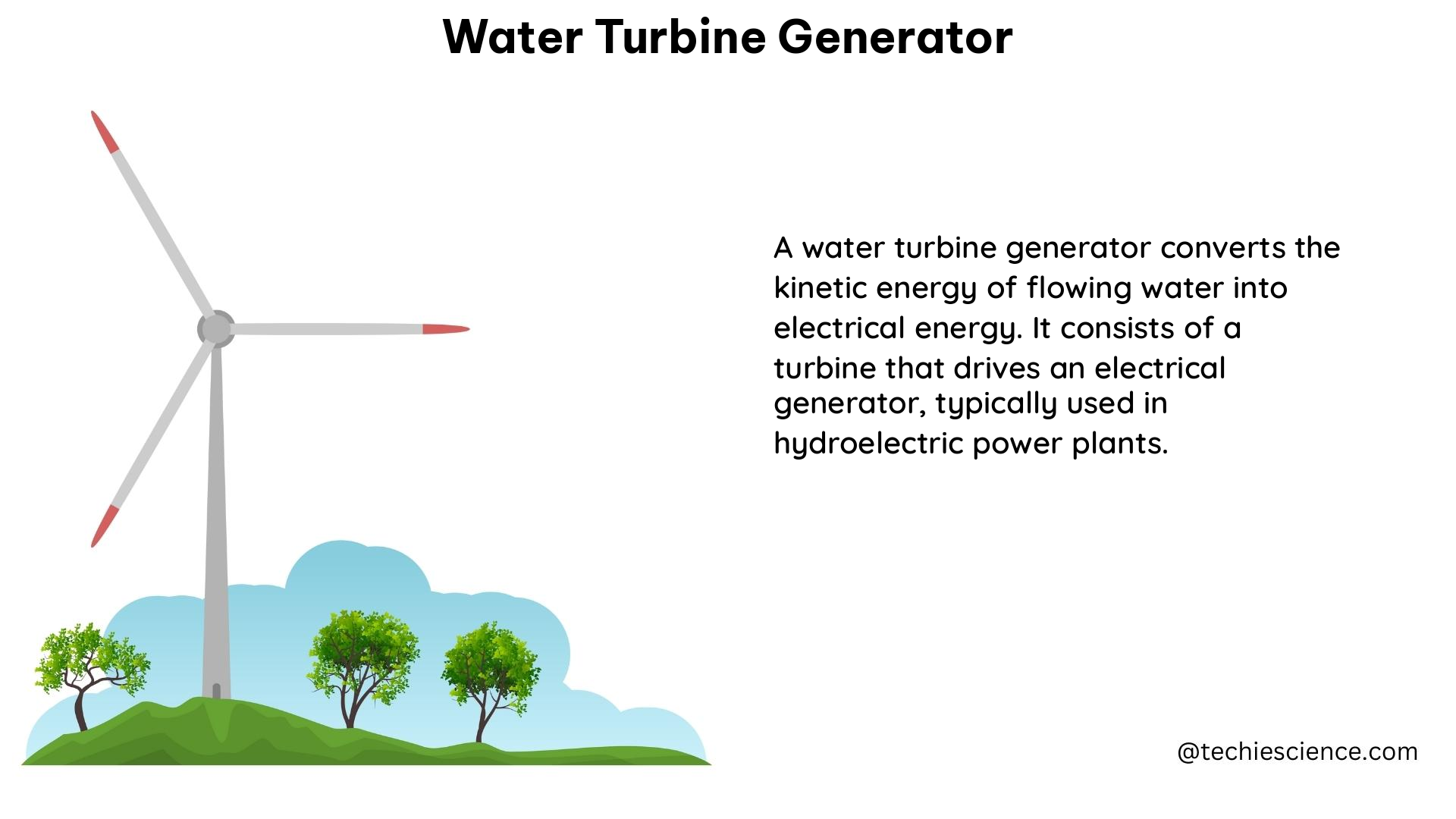Water turbine generators are devices that convert the kinetic energy of flowing water into mechanical energy, which is then converted into electrical energy. These versatile systems offer a sustainable and renewable source of power, making them an attractive option for both off-grid and on-grid applications. Whether you’re looking to power your remote cabin, farm, or small business, understanding the intricacies of water turbine generators can be the key to unlocking a reliable and cost-effective energy solution.
Calculating the Potential Power Output
The efficiency of a water turbine generator is determined by several factors, including the flow rate, head, and force of gravity. To calculate the potential power output of a water turbine generator, you can use the following formula:
Watts = Head (in feet) x Flow (in gpm) / 12
Where the figure, a measure of efficiency, may range from 9 for larger AC systems to 13 for smaller battery-based systems.
For example, a water turbine generator with a head of 10 feet and a flow rate of 500 gallons per minute (gpm) would have a potential power output of:
Watts = 10 feet x 500 gpm / 12 = 4,167 watts
This is equivalent to approximately 5.6 horsepower.
Understanding Turbine Types

In addition to the potential power output, the efficiency of a water turbine generator is also affected by the type of turbine used. There are two main types of turbines:
-
Impulse Turbines: Impulse turbines, such as the Pelton wheel, use the momentum of the water to drive the turbine blades. These turbines are typically more efficient at higher heads and lower flow rates.
-
Reaction Turbines: Reaction turbines, such as the Francis turbine, use the pressure difference between the inlet and outlet of the turbine to drive the blades. These turbines are generally more efficient at lower heads and higher flow rates.
The choice of turbine type will depend on the specific characteristics of your water source, as well as the desired power output and efficiency requirements.
Designing the Generator
The efficiency of a water turbine generator can also be affected by the design of the generator itself. The generator must be properly sized for the turbine and the expected power output, and must be able to handle the voltage and current requirements of the load. Additionally, the generator must be properly cooled and ventilated to prevent overheating.
Typical technical specifications for a water turbine generator may include:
| Specification | Range |
|---|---|
| Flow rate | 500 gpm |
| Head | 10 feet |
| Power output | 4,167 watts (5.6 horsepower) |
| Turbine type | Pelton wheel or Francis turbine |
| Generator type | AC or DC |
| Voltage | 120 V or 240 V |
| Current | 15 A or 30 A |
| Efficiency | 9-13 (depending on the type of system) |
Building a DIY Water Turbine Generator
If you’re interested in building your own water turbine generator, here are the steps you can follow:
-
Select a Suitable Site: Choose a location with a sufficient head and flow rate to meet your power requirements.
-
Design the Turbine: Design the turbine blades and housing based on the selected site and the expected power output. Consider factors such as blade shape, material, and size to optimize efficiency.
-
Construct the Turbine: Build the turbine using materials such as PVC pipe, wooden blocks, and a hobby motor. Ensure that the turbine is properly balanced and aligned to minimize vibrations and maximize power output.
-
Test the Turbine: Use a multimeter to measure the voltage and current produced by the turbine, and calculate the actual power output.
-
Calculate the Efficiency: Determine the efficiency of the turbine using the formula:
Efficiency = (Power output / Potential power output) x 100%
- Optimize the Design: Based on the test results and efficiency calculations, make adjustments to the turbine design to improve its performance.
Remember, building a water turbine generator requires a good understanding of fluid mechanics, electrical engineering, and mechanical design principles. It’s important to carefully plan and execute each step to ensure the safety and reliability of your system.
References
- Water Turbine – an overview | ScienceDirect Topics
- Determining turbine and generator efficiency of a Pico hydro system
- Micro-Hydro Power: Is It Right for My Farm?

The lambdageeks.com Core SME Team is a group of experienced subject matter experts from diverse scientific and technical fields including Physics, Chemistry, Technology,Electronics & Electrical Engineering, Automotive, Mechanical Engineering. Our team collaborates to create high-quality, well-researched articles on a wide range of science and technology topics for the lambdageeks.com website.
All Our Senior SME are having more than 7 Years of experience in the respective fields . They are either Working Industry Professionals or assocaited With different Universities. Refer Our Authors Page to get to know About our Core SMEs.